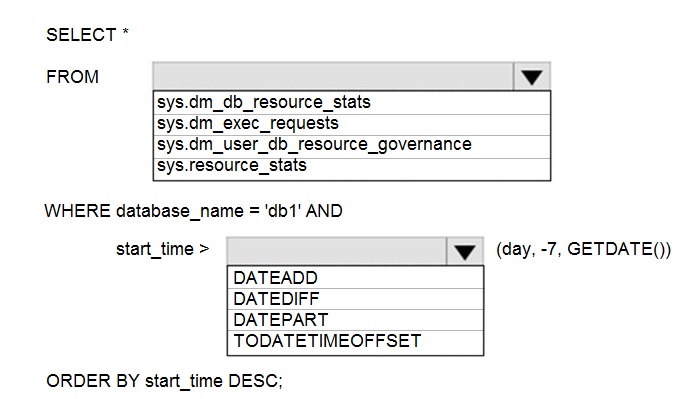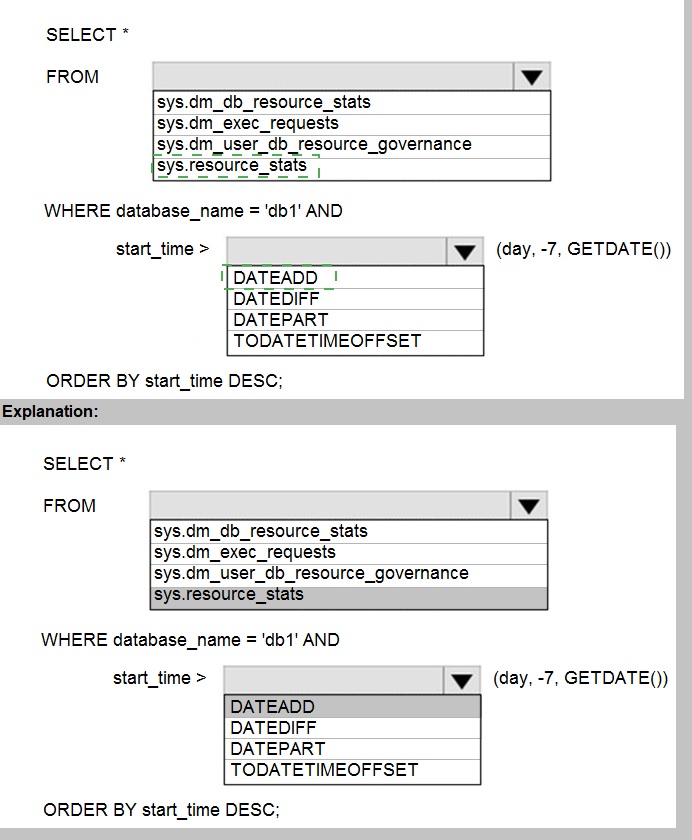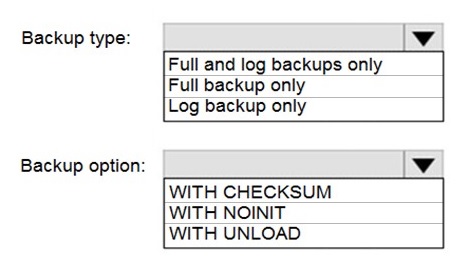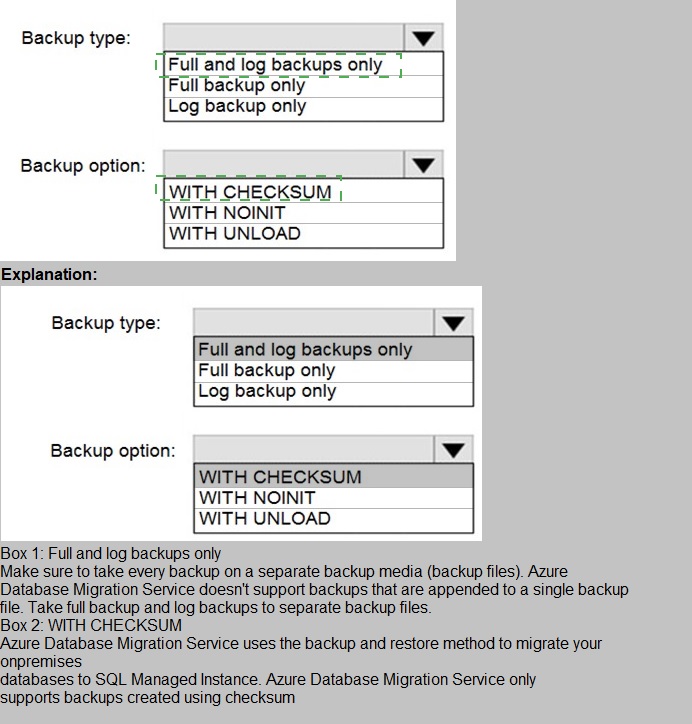
- Email support@dumps4free.com

Topic 5: Misc. Questions
You have SQL Server on an Azure virtual machine that contains a database named DB1.
DB1 contains a table
named CustomerPII.
You need to record whenever users query the CustomerPII table.
Which two options should you enable? Each correct answer presents part of the solution.
NOTE: Each correct selection is worth one point.
A.
server audit specification
B.
SQL Server audit
C.
database audit specification
D.
a server principal
server audit specification
database audit specification
Explanation:
An auditing policy can be defined for a specific database or as a default server policy in
Azure (which hosts SQL Database or Azure Synapse):
A server policy applies to all existing and newly created databases on the server.
If server auditing is enabled, it always applies to the database. The database will
be audited, regardless of the database auditing settings.
Enabling auditing on the database, in addition to enabling it on the server, does
not override or change any of the settings of the server auditing. Both audits will
exist side by side.
Note:
The Server Audit Specification object belongs to an audit.
A Database Audit Specification defines which Audit Action Groups will be audited for the
specific database in which the specification is created.
Reference:
https://docs.microsoft.com/en-us/azure/azure-sql/database/auditing-o
You have an Azure SQL database named db1.
You need to retrieve the resource usage of db1 from the last week.
How should you complete the statement? To answer, select the appropriate options in the
answer area.
NOTE: Each correct selection is worth one p

You have 50 Azure SQL databases.
You need to notify the database owner when the database settings, such as the database
size and pricing tier, are modified in Azure.
What should you do?
A.
Create a diagnostic setting for the activity log that has the Security log enabled.
B.
For the database, create a diagnostic setting that has the InstanceAndAppAdvanced
metric enabled.
C.
Create an alert rule that uses a Metric signal type.
D.
Create an alert rule that uses an Activity Log signal type
Create an alert rule that uses an Activity Log signal type
xplanation:
Activity log events - An alert can trigger on every event, or, only when a certain number of
events occur.
Reference:
https://docs.microsoft.com/en-us/azure/azure-sql/database/alerts-insights-configure-porta
Note: This question is part of a series of questions that present the same scenario.
Each question in the series contains a unique solution that might meet the stated
goals. Some question sets might have more than one correct solution, while others
might not have a correct solution.
After you answer a question in this section, you will NOT be able to return to it. As a
result, these questions will not appear in the review screen.
You have two Azure SQL Database servers named Server1 and Server2. Each server
contains an Azure SQL database named Database1.
You need to restore Database1 from Server1 to Server2. The solution must replace the
existing Database1 on Server2.
Solution: You run the Remove-AzSqlDatabase PowerShell cmdlet for Database1 on
Server2. You run the Restore-AzSqlDatabase PowerShell cmdlet for Database1 on
Server2.
Does this meet the goal?
A.
Yes
B.
No
No
Explanation:
Instead restore Database1 from Server1 to the Server2 by using the RESTORE Transact-
SQL command and the REPLACE option.
Note: REPLACE should be used rarely and only after careful consideration. Restore
normally prevents accidentally overwriting a database with a different database. If the
database specified in a RESTORE statement already exists on the current server and the
specified database family GUID differs from the database family GUID recorded in the
backup set, the database is not restored. This is an important safeguard.
Reference:
https://docs.microsoft.com/en-us/sql/t-sql/statements/restore-statements-transact-sql
You have an on-premises Microsoft SQL Server 2016 server named Server1 that contains
a database named DB1.
You need to perform an online migration of DB1 to an Azure SQL Database managed
instance by using Azure Database Migration Service.
How should you configure the backup of DB1? To answer, select the appropriate options in
the answer area.
NOTE: Each correct selection is worth one point.

| Page 4 out of 44 Pages |
| Previous |